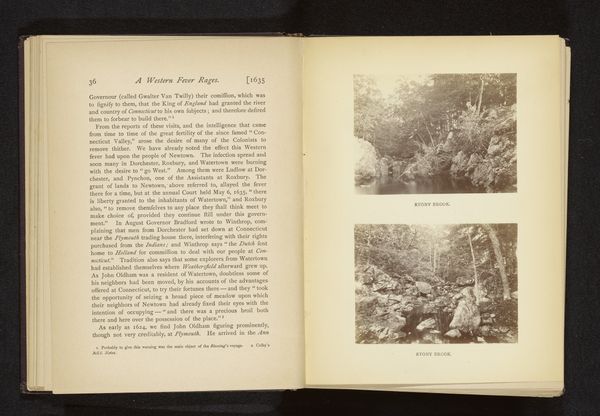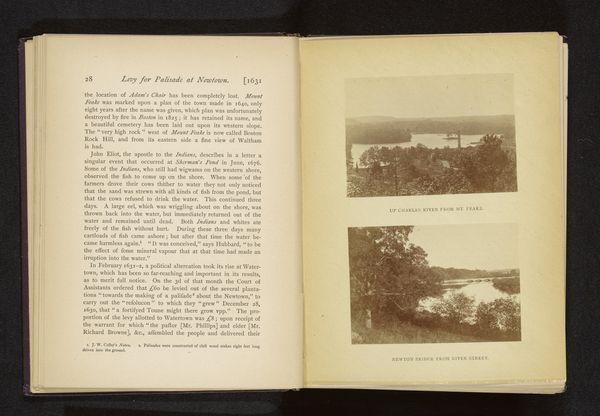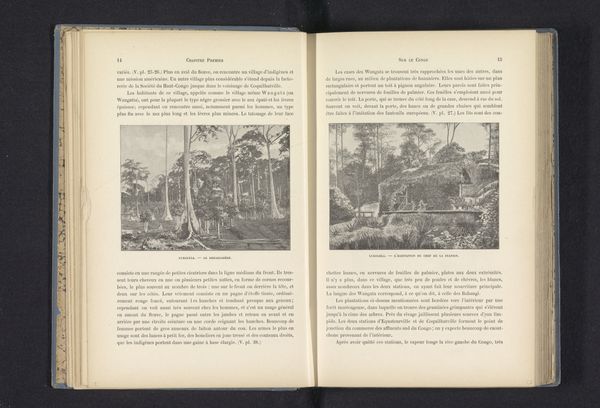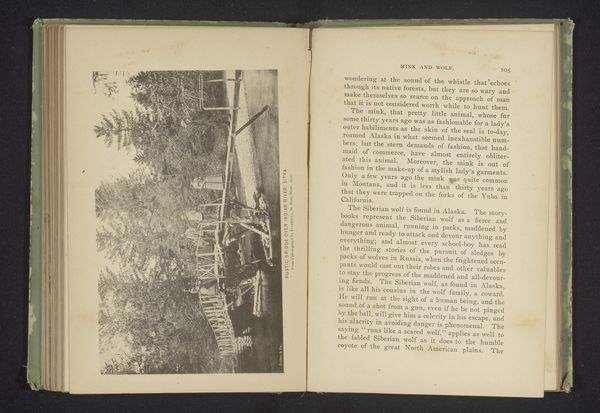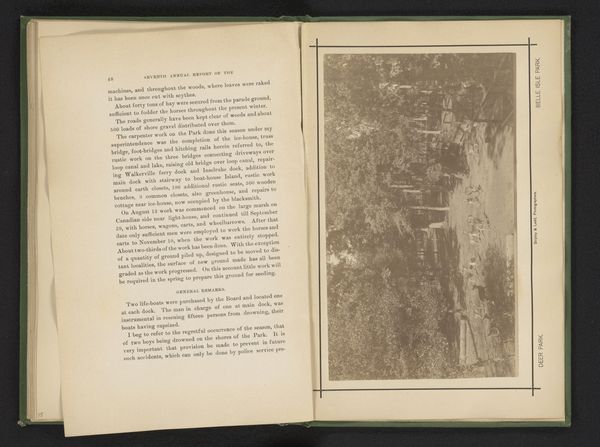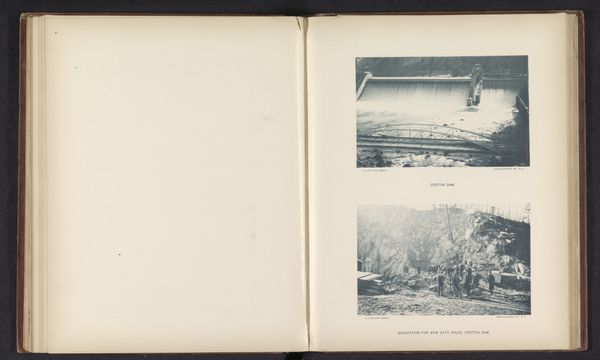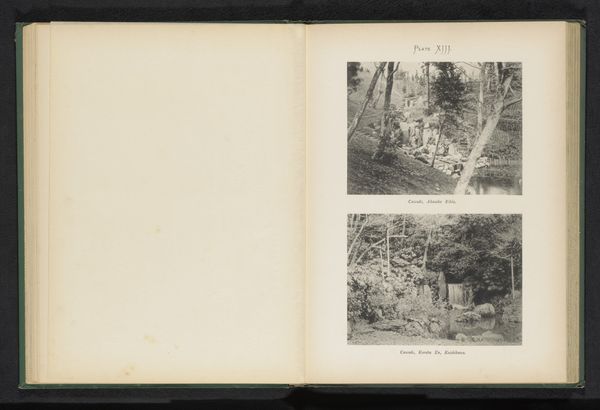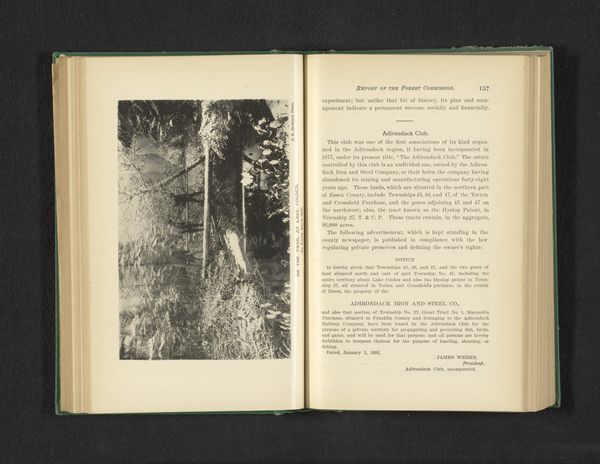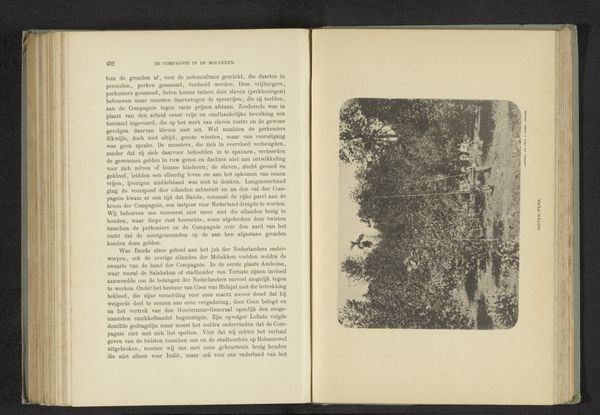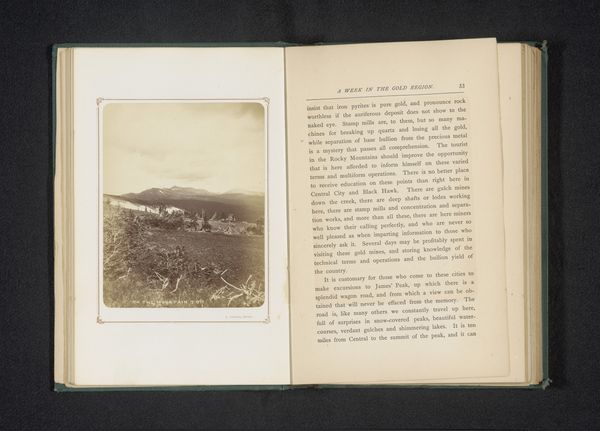
print, photography, gelatin-silver-print
# print
#
landscape
#
photography
#
gelatin-silver-print
Dimensions: height 66 mm, width 89 mm
Copyright: Rijks Museum: Open Domain
Curator: Here we have “Gezicht op Devil's Den in Stony Brook in Norfolk, Massachusetts," a gelatin silver print from before 1879 by Thomas R. Lewis. It’s intriguing as a document of place. Editor: It's interesting to see these landscapes presented within the pages of a book. There's something almost archaeological about viewing these images as artifacts, particularly as they are nestled among printed text on the facing page. What draws your eye in this particular arrangement? Curator: I immediately think of the labor involved. Someone painstakingly created these gelatin silver prints, likely from glass plate negatives. Consider the social context – why photograph these specific locations? Who was the intended audience, and what was their relationship to this landscape? These images are clearly meant for reproduction and dissemination. They aren’t meant to stand alone, but rather serve a larger narrative about the area. Editor: So you're thinking about the print-making process, and what this object can tell us about how photographs were circulated back then. Do you think this reflects an early form of tourism, perhaps? Curator: Exactly! And more than that, how landscapes were consumed. These photographs, embedded within this book, shape our understanding. Consider the power dynamics: who gets to decide which landscapes are worthy of preservation and dissemination? It makes you consider who is written out of this picturesque framing. The act of making this print, mass producing, and distributing these prints. Editor: I see. So, the photograph itself is just one component of the art – it is the labor and processes around making it and reproducing it that become central to your understanding. Thanks! That's really helpful. Curator: Yes, exactly! Examining the print not as an individual art piece, but the act of photographic creation in general. We gain a glimpse into cultural and commercial facets of 19th-century landscape representation.
Comments
No comments
Be the first to comment and join the conversation on the ultimate creative platform.
